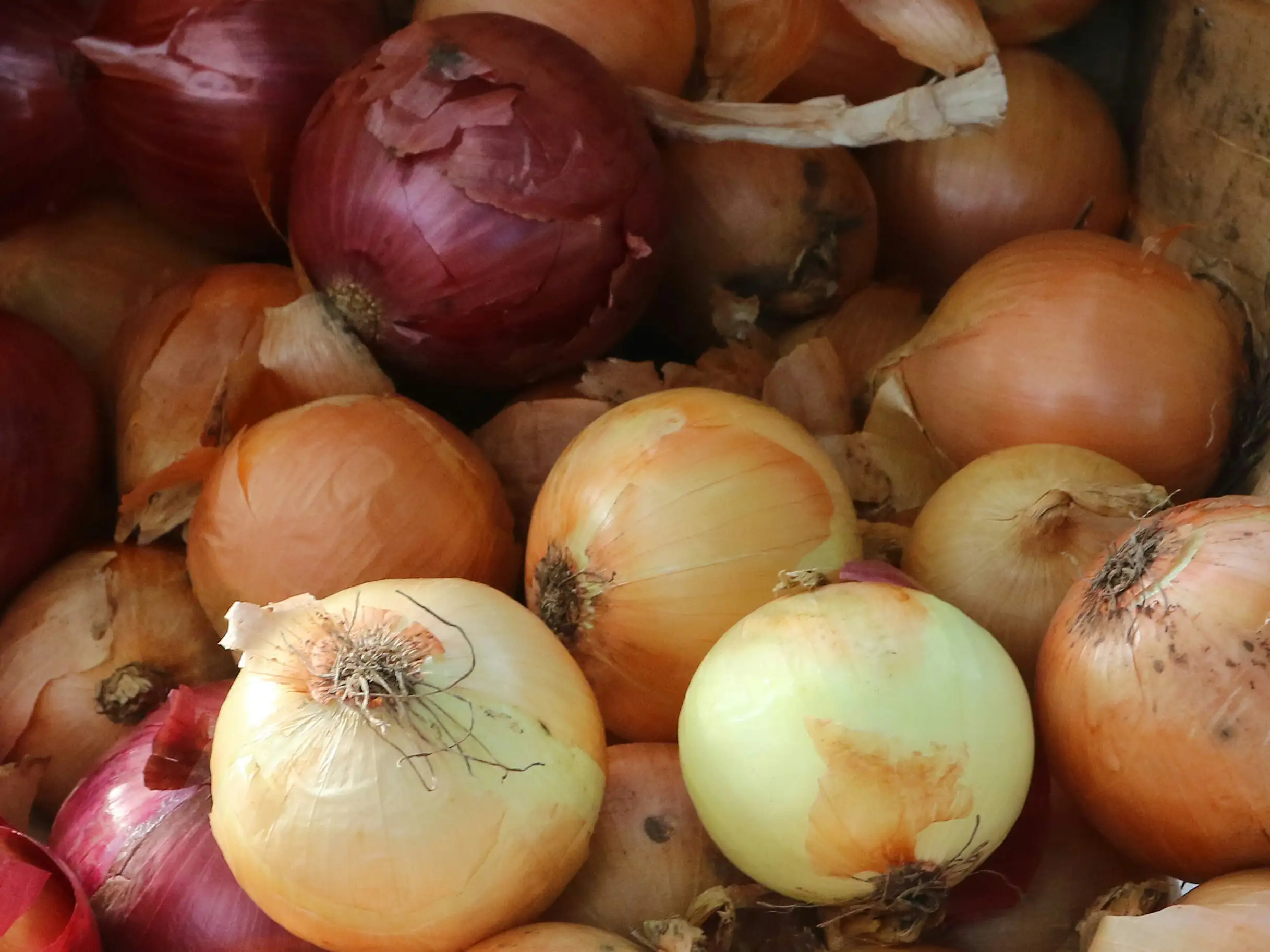ONIONS
Onions (Allium cepa) need cooler temperatures in the seedling stage then warm dry conditions once bulbs start to form. Hence their traditional autumn or early winter planting time for summer harvest.
At a glance;
- Plant from March to June
- Sunny site
- Free draining soil with compost added
- Six months to harvest

Selecting the site
Onions needs a good six hours of sunshine per day so choose an open site. If possible, avoid using a site where onions, leeks or garlic have been planted within the last three years.
The soil
Onions need a generous supply of nutrients. A few weeks prior to planting, dig in ican Real Blood & Bone or well-rotted manure, and plenty of compost. Prepare the soil so it is friable, free draining and as weed free as possible.
Planting
Seeds can be sown directly into the garden soil and then thinned to 10cm spacings (the thinned out seedlings can be eaten like chives). Otherwise, to cut down on weeding, sow in trays of seed raising mix and transplant the young plants into the garden when they’re about 10cm tall (or simply buy seedlings in punnets from the garden centre).
Watering
Onions requires minimal watering due to a dislike for wet conditions. Water sparingly and only as necessary. During winter, watering may not be required at all.
Feeding
After planting, apply fertiliser (we recommend ican Organic Vege Food) along the rows at approximately ½ cup per metre. Feed again in autumn, nothing through winter, and again early spring to support plant growth.
Weeding
Keep ahead of weeds by scratching them out while still small, leaving them to compost on the soil.
Pests and diseases
Downy mildew and grey mould are fungal diseases that infects the leaves and becomes worse with warm, moist weather. Water only at the base of the plants to keep the leaves dry. Spray with Grosafe FreeFlo Copper as a means of protection and control.
Black aphids are a common pest of the onion family and can be seen crowded on new leaves. Spray with Grosafe Enspray 99.
Harvesting
When onion leaves wilt and fall over it’s harvest time. After lifting, leave them in a warm sunny spot to dry out before storing in wire baskets or mesh bags in a cool, dry spot. Use a small garden fork to gently lift the bulbs out of the ground. After lifting, remove the soil carefully while keeping the skin intact and leave them in a warm sunny spot to dry out.
Sweet red onions can be grown and harvested alongside golden onions, although they don’t have quite the storage life of the classic Kiwi favourite, Pukekohe Longkeeper, which can be stored for up to 10 months. Interesting heirloom onion, Rossa Lunga is a traditional favourite in Italy and France and fun to grow. These visually striking, long red onions have a mild, sweet flavour.
Spring onions
Spring onions (aka bunching onions) are easy to grow for a constant, year round supply of fresh onion flavour that’s useful in a wide range of dishes, cooked or raw. Seedlings are available most of the year, or grow them from seed sown directly into well-drained soil in autumn and spring. Harvest when at a size you like as you need them. They’re easy to grow in pots.




